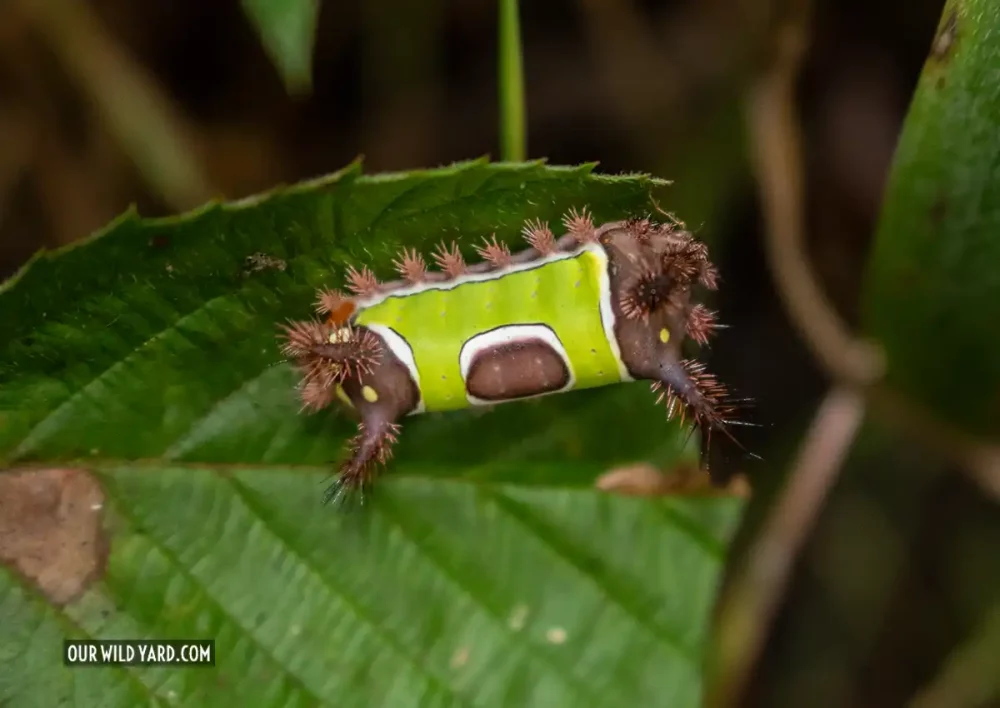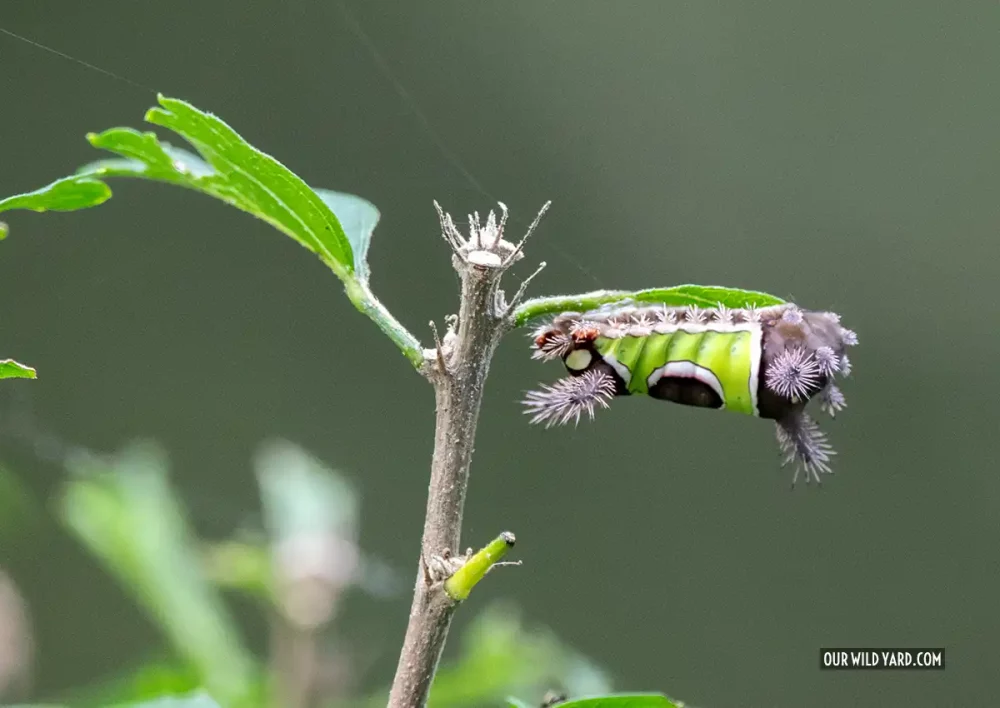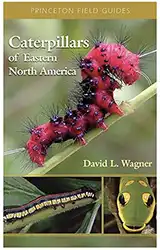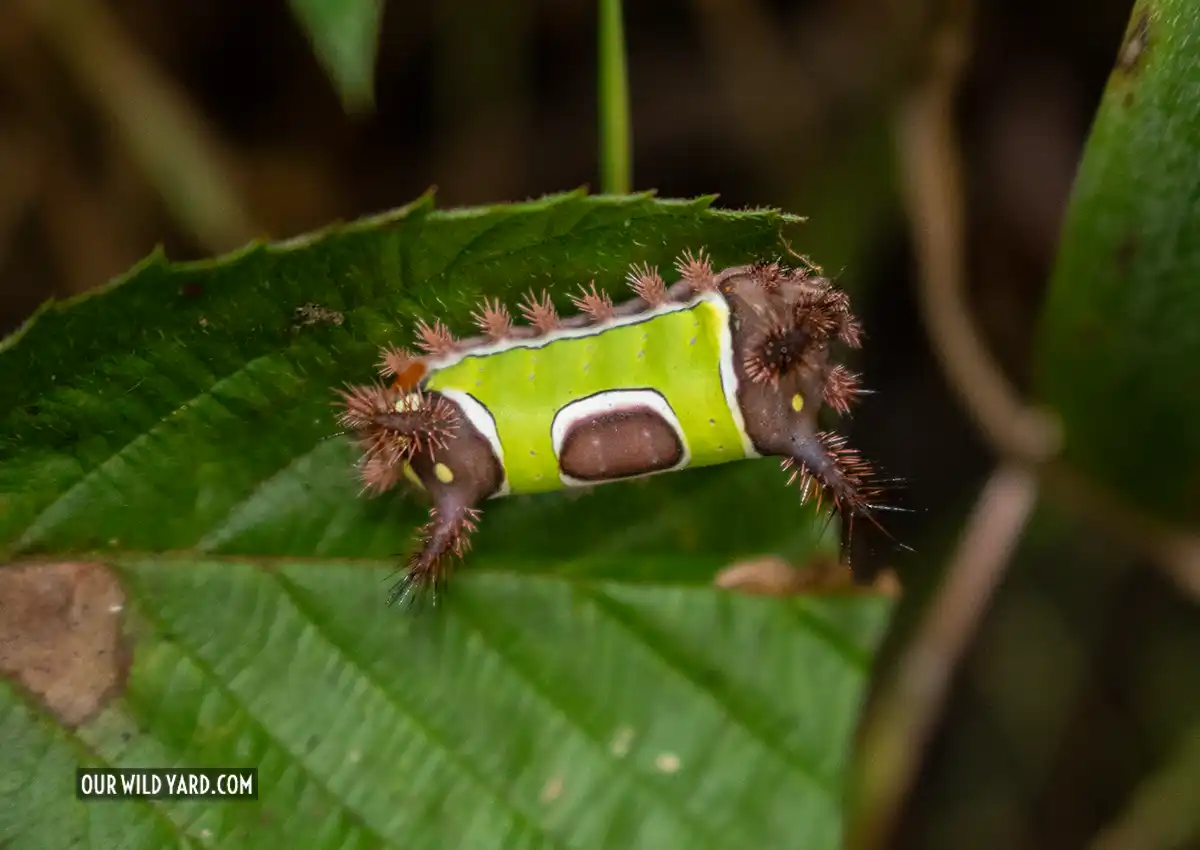I love finding caterpillars in our yard. It’s like an Easter egg hunt that lasts for months. And when you find a saddleback caterpillar (Acharia stimulea) you have hit the jackpot.
I’ve only seen this bright green caterpillar twice. Both times it was still on the underside of a leaf, and also both times I found them in the month of September. Mature caterpillars (as a late instar) can be found throughout their range from August to October.

Acharia stimulea belongs to the family of slug caterpillars, Limacodidae. Slug caterpillars are very colorful and most have venomous spines, like this Spiny-oak slug caterpillar we once found.
The saddleback caterpillar gets its name from its coloration as it appears to carry a little brown saddle on its back. Its body is bright green except for the saddle and the head, rear, and skirt of the body. These contain tubercles with hollow spines that break off when touched, releasing a toxin to guard from predators.

*This article may contain affiliate links. We receive a small commission at no extra cost to you.*
If you are looking to learn more about slime molds, check out this book on slime mold ecology: Myxomicetes: Biology, Systematics, Biogeography, and Ecology by Carlos Rojas, and Stephen L. Stephenson.
Recommended field guide

Caterpillars of Eastern North America by Princeton Field Guides is a wonderful addition to a naturalist’s library. We use it all the time when we need to ID caterpillars.
Full-color photographs for easy identification. 512 pages.
Saddleback caterpillar range
These are found in eastern North America, from Massachusetts south to Florida and east to Missouri. They are also found in Mexico.
They live in woodlands, edges of wetlands, gardens, and fields. I’ve only seen them in our yard, not during any of our hikes.

What does the saddleback caterpillar turn into
This beautiful caterpillar turns into the saddleback caterpillar moth. Adults are not venomous.
The saddleback caterpillar moth has a wingspan of about 1 – 1.7 inches.
The brownish anterior wings have a white dot. One to three additional dots are present on the other end of the forewings. The posterior wings are cream-colored.
Saddleback caterpillar host plant
These caterpillars are not very picky and are not specialists. They feed on a variety of plants such as maple, oak, blueberry, buttonbush, apple, cabbage, aster, and citrus plants.
The adult moth does not feed.

Saddleback caterpillar sting, is it dangerous?
As you can see in the photos, both its ends and sides are full of spines. These are stinging spines. Do NOT EVER touch this caterpillar. Their cocoons also have tiny spines, so do not handle those either.
The sting of the saddleback caterpillar might be one of the most potent stings of any North American caterpillar.
What happens if you are stung by a saddleback caterpillar?
The reaction to the sting varies from person to person. But even the slightest contact will produce a painful reaction, swelling of the affected area, and it is sometimes accompanied by nausea. In some cases, the sting of a saddleback caterpillar can lead to acute urticaria (hives) and/or anaphylactic shock.
If stung by this caterpillar, remove all the little hairs and wash the affected area immediately. Some people may need medical assistance.
In summary, this is a beautiful, colorful caterpillar to find in your yard but it’s bright colors are a warning signal: please don’t touch! Let us know in the comments below where you’ve seen one, what time of year, and the host plant if you know it! Happy caterpillar hunting!

